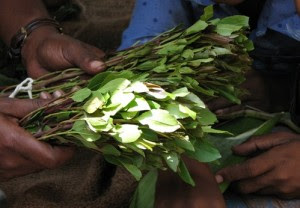For Top Bonuses on Wall Street, 7 Figures or 8?
Published: January 9, 2010
Everyone on Wall Street is fixated on The Number.
The bank bonus season, that annual rite of big money and bigger egos, begins in earnest this week, and it looks as if it will be one of the largest and most controversial blowouts the industry has ever seen.
Bank executives are grappling with a question that exasperates, even infuriates, many recession-weary Americans: Just how big should their paydays be? Despite calls for restraint from Washington and a chafed public, resurgent banks are preparing to pay out bonuses that rival those of the boom years. The haul, in cash and stock, will run into many billions of dollars.
Industry executives acknowledge that the numbers being tossed around — six-, seven- and even eight-figure sums for some chief executives and top producers — will probably stun the many Americans still hurting from the financial collapse and ensuing Great Recession.
Goldman Sachs is expected to pay its employees an average of about $595,000 apiece for 2009, one of the most profitable years in its 141-year history. Workers in the investment bank of
JPMorgan Chase stand to collect about $463,000 on average.
Many executives are bracing for more scrutiny of pay from Washington, as well as from officials like
Andrew M. Cuomo, the attorney general of New York, who last year demanded that banks disclose details about their bonus payments. Some bankers worry that the United States, like Britain, might create an extra tax on bank bonuses, and Representative
Dennis J. Kucinich, Democrat of Ohio, is proposing legislation to do so.
Those worries aside, few banks are taking immediate steps to reduce bonuses substantially. Instead, Wall Street is confronting a dilemma of riches: How to wrap its eye-popping paychecks in a mantle of moderation. Because of the potential blowback, some major banks are adjusting their pay practices, paring or even eliminating some cash bonuses in favor of stock awards and reducing the portion of their revenue earmarked for pay.
Some bank executives contend that financial institutions are beginning to recognize that they must recalibrate pay for a post-bailout world.
“The debate has shifted in the last nine months or so from just ‘less cash, more stock’ to ‘what’s the overall number?’ ” said
Robert P. Kelly, the chairman and chief executive of the
Bank of New York Mellon. Like many other bank chiefs, Mr. Kelly favors rewarding employees with more long-term stock and less cash to tether their fortunes to the success of their companies.
Though Wall Street bankers and traders earn six-figure base salaries, they generally receive most of their pay as a bonus based on the previous year’s performance. While average bonuses are expected to hover around half a million dollars, they will not be evenly distributed. Senior banking executives and top Wall Street producers expect to reap millions. Last year, the big winners were bond and currency traders, as well as investment bankers specializing in health care.
Even some industry veterans warn that such paydays could further tarnish the financial industry’s sullied reputation.
John S. Reed, a founder of
Citigroup, said Wall Street would not fully regain the public’s trust until banks scaled back bonuses for good — something that, to many, seems a distant prospect.
“There is nothing I’ve seen that gives me the slightest feeling that these people have learned anything from the crisis,” Mr. Reed said. “They just don’t get it. They are off in a different world.”
The power that the federal government once had over banker pay has waned in recent months as most big banks have started repaying the billions of dollars in federal aid that propped them up during the crisis. All have benefited from an array of federal programs and low interest rate policies that enabled the industry to roar back in profitability in 2009.
This year, compensation will again eat up much of Wall Street’s revenue. During the first nine months of 2009, five of the largest banks that received federal aid — Citigroup,
Bank of America, Goldman Sachs, JPMorgan Chase and
Morgan Stanley — together set aside about $90 billion for compensation. That figure includes salaries, benefits and bonuses, but at several companies, bonuses make up more than half of compensation.
Goldman broke with its peers in December and announced that its top 30 executives would be paid only in stock. Nearly everyone on Wall Street is waiting to see how much stock is awarded to
Lloyd C. Blankfein, Goldman’s chairman and chief executive, who is a lightning rod for criticism over
executive pay. In 2007, Mr. Blankfein was paid $68 million, a Wall Street record. He did not receive a bonus in 2008.
Goldman put aside $16.7 billion for compensation during the first nine months of 2009.
Responding to criticism over its pay practices, Goldman has already begun decreasing the percentage of revenue that it pays to employees. The bank set aside 50 percent in the first quarter, but that figure fell to 48 percent and then to 43 percent in the next two quarters.
JPMorgan executives and board members have also been wrestling with how much pay is appropriate.
“There are legitimate conflicts between the firm feeling like it is performing well and the public’s prevailing view that the Street was bailed out,” said one senior JPMorgan executive who was not authorized to speak for the company.
JPMorgan’s investment bank, which employs about 25,000 people, has already reduced the share of revenue going to the compensation pool, from 40 percent in the first quarter to 37 percent in the third quarter.
At Bank of America, traders and bankers are wondering how much
Brian T. Moynihan, the bank’s new chief, will be awarded for 2010. Bank of America, which is still absorbing
Merrill Lynch, is expected to pay large bonuses, given the bank’s sizable trading profits.
Bank of America has also introduced provisions that would enable it to reclaim employees’ pay in the event that the bank’s business sours, and it is increasing the percentage of bonuses paid in the form of stock.
“We’re paying for results, and there were some areas of the company that had terrific results, and they will be compensated for that,” said Bob Stickler, a Bank of America spokesman.
At Morgan Stanley, which has had weaker trading revenue than the other banks, managers are focusing on how to pay stars in line with the industry. The bank created a pay program this year for its top 25 workers, tying a fifth of their deferred pay to metrics based on the company’s later performance.
A company spokesman, Mark Lake, said: “Morgan Stanley’s board and management clearly understands the extraordinary environment in which we operate and, as a result, have made a series of changes to the firm’s compensation practices.”
The top 25 executives will be paid mostly in stock and deferred cash payments.
John J. Mack, the chairman, is forgoing a bonus. He retired as chief executive at the end of 2009.
At Citigroup, whose sprawling consumer banking business is still ailing, some managers were disappointed in recent weeks by the preliminary estimates of their bonus pools, according to people familiar with the matter. Citigroup’s overall 2009 bonus pool is expected to be about $5.3 billion, about the same as it was for 2008, although the bank has far fewer employees.
The highest bonus awarded to a Citigroup executive is already known: The bank said in a regulatory filing last week that the head of its investment bank, John Havens, would receive $9 million in stock. But the bank’s chief executive,
Vikram S. Pandit, is forgoing a bonus and taking a salary of just $1.
SOURCE:http://www.nytimes.com/2010/01/10/business/













 A machine gun! It only took me ten minutes after arriving in Kathmandu to find a machine gun pointed to my head. I was desperately struggling for a good explanation why I was running back into the airport without a bag and my passport. The answer was pretty easy though. I thought the immigration officer in Nepal would accept Nepalese Rupees for issuing the Visa. I didn't bring anything else. Unfortunately, I didn't even have enough Rupees and an ATM is only one of the modern amenities Kathmandu's airport does not provide. However, running out of the building in order to find a bank and get some US$ is a really good way to get in touch with the local security personnel. And after explaining to the gun-wielding police officer the reasons why I was desperately trying to find some Dollar notes, his suspicious look finally turned into a warm and friendly smile.
A machine gun! It only took me ten minutes after arriving in Kathmandu to find a machine gun pointed to my head. I was desperately struggling for a good explanation why I was running back into the airport without a bag and my passport. The answer was pretty easy though. I thought the immigration officer in Nepal would accept Nepalese Rupees for issuing the Visa. I didn't bring anything else. Unfortunately, I didn't even have enough Rupees and an ATM is only one of the modern amenities Kathmandu's airport does not provide. However, running out of the building in order to find a bank and get some US$ is a really good way to get in touch with the local security personnel. And after explaining to the gun-wielding police officer the reasons why I was desperately trying to find some Dollar notes, his suspicious look finally turned into a warm and friendly smile.







